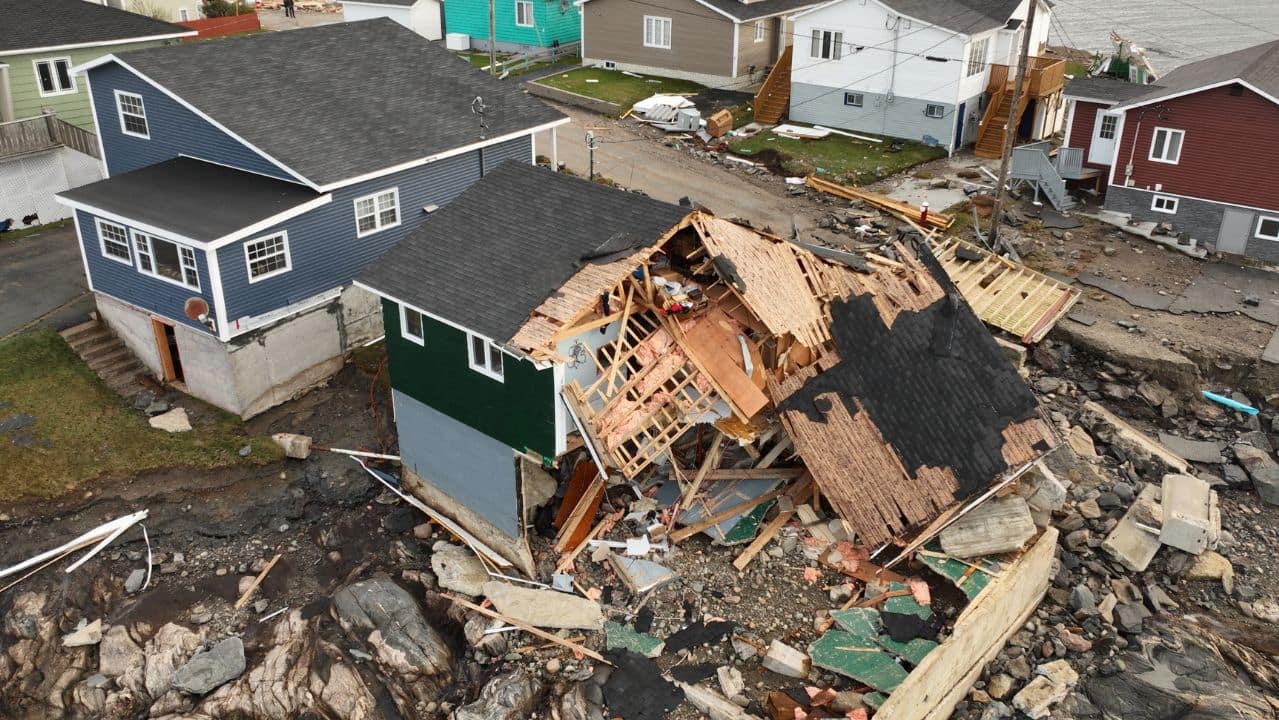Forecasters say Hurricane Ian has become an extremely dangerous Category 4 storm as it approaches Florida's west coast.
The. U.S. National Hurricane Center in Miami said Ian was centred about 100 kilometres west-southwest of Naples at 6 a.m. ET, swirling toward the coast at 17 kilometres per hour. Meteorologists and the Federal Emergency Management Administration have said that speed could slow as it nears landfall in Florida, meaning the storm could linger before it passes through.
The major hurricane has prompted warnings of possibly dangerous storm surge along the state's heavily populated Gulf Coast from Bonita Beach to the Tampa Bay region.
Winds and rain have begun intensifying in the state, a day after Ian battered the western tip of Cuba, bringing down the electricity grid and leaving the entire island without power.

Florida residents rushed to board up their homes, stash precious belongings on upper floors and flee.
"You can't do anything about natural disasters," said Vinod Nair, who drove inland from the Tampa area Tuesday with his wife, son, dog and two kittens seeking a hotel in the tourist district of Orlando. "We live in a high-risk zone, so we thought it best to evacuate."
Nair and his family were among at least 2.5 million Florida residents ordered to evacuate in anticipation of a powerful storm surge, high winds and flooding rains. The hurricane centre predicted Ian would roar ashore on Florida's southwest coast on Wednesday afternoon.

Winds exceeding tropical-storm strength of 63 km/h reached Florida by 3 a.m., and hurricane-force winds were expected in Florida well in advance of the storm's eyewall moving inland, the Miami-based centre said.
"It is a big storm, it is going to kick up a lot of water as it comes in," Florida Gov. Ron DeSantis said in Sarasota, a coastal city of 57,000 in the storm's projected path. He warned at a news conference: "This the kind of storm surge that is life threatening."
Residents, tourists seek shelter
Ian's forward movement slowed over the Gulf, enabling the hurricane to grow wider and stronger. A hurricane warning covering roughly 350 kilometres of the state included Fort Myers as well as Tampa and St. Petersburg, which could get their first direct hit by a major hurricane since 1921.
Forecasters said the storm surge could reach 3.6 metres if it peaks at high tide. Rainfall near the area of landfall could top 46 centimetres.
Current conditions at the Southernmost Point tonight. Reminder, the Florida Keys are under a tropical storm warning, a storm surge watch, and a flood watch.#FloridaKeys #KeyWest #FLKeys #FLwx pic.twitter.com/Es4cb9djBX
—Airports in Tampa, St. Petersburg and Key West closed. Disney World theme parks and Sea World in Orlando all closed ahead of the storm.
A couple from England on vacation in Tampa found themselves faced with riding out the storm at a shelter. Glyn and Christine Williams of London were told to leave their hotel near the beach when evacuations were ordered. Because the airport shut down, they could get no flight home.

"Unfortunately, all the hotels are full or closed, so it looks as though we're going to be in one of the shelters," Christine Williams said.
"You know, you got to go with the flow," Glyn Williams added. "So we're quite happy doing what we're doing."
Georgia, South Carolina also on alert
The precise location of landfall was still uncertain, but with Ian's heavy winds extending 280 kilometres from its centre, damage was expected across a wide area of Florida. Flash floods were possible across the whole state, and portions of its east coast faced a potential storm surge threat as Ian's bands approach the Atlantic Ocean. Warnings also were issued for isolated tornadoes.
Florida Power and Light warned those in Ian's path to brace for days without electricity. As a precaution, hundreds of residents were being evacuated from several nursing homes in the Tampa area, where hospitals also were moving some patients.

Parts of Georgia and South Carolina also could see flooding rains and some coastal surge into Saturday. Georgia Gov. Brian Kemp pre-emptively declared an emergency, putting 500 National Guard troops on standby to respond as needed.
Before turning toward Florida, Ian struck Cuba's Pinar del Rio province with sustained winds of 205 km/h, causing destruction in the island nation's world-famous tobacco belt.
Local government station TelePinar reported heavy damage at the main hospital in Pinar del Rio city, tweeting photos of collapsed ceilings, widely flung debris and toppled trees. No deaths were reported. Some left the stricken area on foot, carrying their children, while buses tried to evacuate others through waterlogged streets. Some opted to stay at their damaged houses.
"It was horrible," said Yusimi Palacios, a resident of Pinar del Rio inside her damaged house. "But here we are alive, and I only ask the Cuban revolution to help me with the roof and the mattress."

















